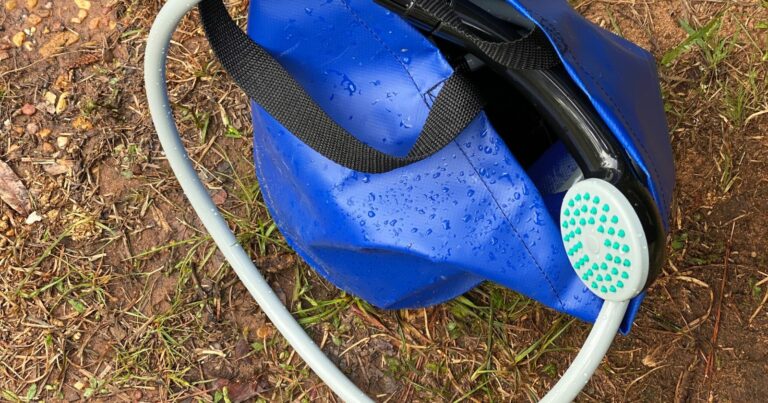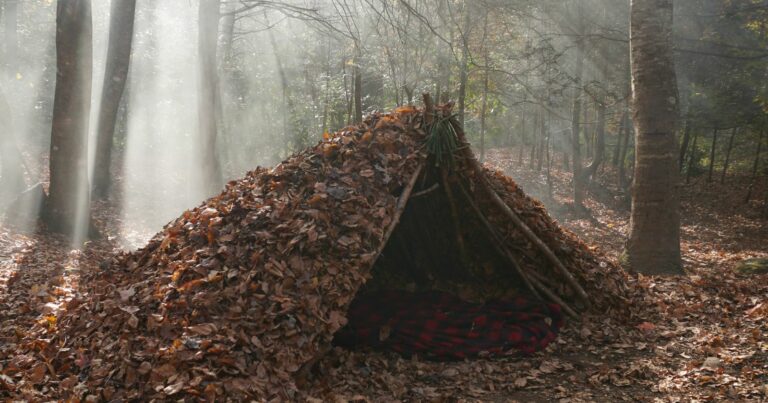How to Set Up a Camping Hammock with Rope
Nothing beats swaying gently in a breezy hammock at the end of an active day exploring nature. But stringing up a camping hammock with just rope can be intimidating if you’ve never done it before. Will those knots hold your weight? How do you get the perfect hang angle and tension? With a few simple steps, you’ll be lounging safely in a cozy handmade hammock in no time.
In this post, I’ll walk through the basics of choosing sturdy anchor points, tying secure rope loops, attaching your hammock with carabiners or knots, and adjusting for comfort. You’ll learn foolproof techniques to hang a hammock using rope and basic gear you already have on hand.
Follow my guidelines and soon you’ll be the envy of the campground, relaxing in your personal oasis while others fuss with tricky tent poles and flimsy fabric. A well-rigged rope hammock lets you sway in the breeze and drift off to sleep under a starry sky. So read on to start stringing up your own slice of hammock heaven using ropes and smart knots. The Forest’s coziest hangout spot awaits!
Choose a Location with Sturdy Anchor Points
Start by picking two trees:
- Space trees 12-15 feet apart to support a lay-flat hammock.
- Select hardwood trees like oaks over soft pines to hold weight.
- Ensure trees have thick, healthy trunks at least 12 inches diameter.
- Avoid trees with excessive lean that compromise stability.
- Check for healthy, robust branches without cracks or damage.
- Confirm hammock placement won’t disrupt wildlife trails or damage tree roots.
Choosing sturdy, properly spaced trees prevents collapsed hammocks or falls from weak points giving way.
Wrap Rope Securely Around Trees
With quality anchor trees selected, wrap rope at chest height:
- Start with 100 feet of 1/2 inch nylon or polyester rope. More is safer than less.
- Wrap the rope around the tree trunk above any lower branches.
- Make 5-6 tight wraps to distribute pressure and prevent damage.
- Tie off with a secure knot like a double fisherman’s bend.
Proper rope wrapping protects bark and provides a solid friction anchor for hanging weight.
Create Loops Using Simple Overhand Knots
Next, use overhand knots to form loops:
- Measure equal lengths of rope from the tree to both ends.
- At the end of each length, tie an overhand knot to create a loop.
- Snug the knots tightly up against the tree trunk. Check for even length.
- Pull the free end through the loop to create an adjustable hitch.
Evenly spaced, properly tied loops provide hammock hang points that won’t loosen or give.
Attach Hammock to Loops with Carabiners
Now clip carabiner hooks into the loops:
- Use locking carabiners to prevent accidental detachment.
- For each hammock end, pull the loop open wide and insert carabiner end through.
- Close the wiregate firmly – listen for the locking “click”.
- Attach hammock end straps, rings or hooks to each carabiner.
Quality locking carabiners securely fasten the hammock while still allowing easy length adjustments.
Repeat Process on Second Tree
On the second tree, mirror the full rope wrapping, knot-tying, loop forming and carabiner clipping process.
- Adjust rope lengths until hammock hangs flat, not banana-shaped.
- The hammock should have a very slight sag in middle for comfort.
- Ensure ropes have equal tension, re-wrap to adjust if needed.
Identical rigging and precise lengths create a lay-flat hammock bed for optimal rest.
Adjust Rope Height for Ideal Support
To tweak the hang:
- Loosen knots and slide rope up or down to change height.
- The optimal hang angle is around 30°, or so your knees are above your hips.
- Lowering the attachment point creates a flatter hang. Raising it creates more sag.
- Retighten knots carefully once the perfect height is reached.
Customizing rope heights prevents aches from an improper hang or sag.
Test Bearing Weight Before Lounging
Before settling in:
- Sit in the center of hammock to check stability and balance.
- Have a partner shake the ropes vigorously from side-to-side.
- Lie down and roll slightly to feel how much the hammock cradles and gives.
- Adjust again if needed until the hang feels secure and comfortable.
Cautiously testing weight bearing ensures safety before dozing off.
Follow Leave No Trace Principles
When camping:
- Use wide tree straps instead of ropes to prevent bark damage.
- Select designated campsites whenever possible.
- Rotate anchor points if staying multiple nights.
- Avoid cutting vegetation or living trees for anchors.
Responsible camping preserves the wilderness for everyone’s enjoyment.
Stringing up a DIY hammock with rope takes skill, but the comfort payoff is huge. Follow these tips and soon you’ll be napping like a baby, swaying in your personal oasis. You may never go back to sleeping on the ground again!







